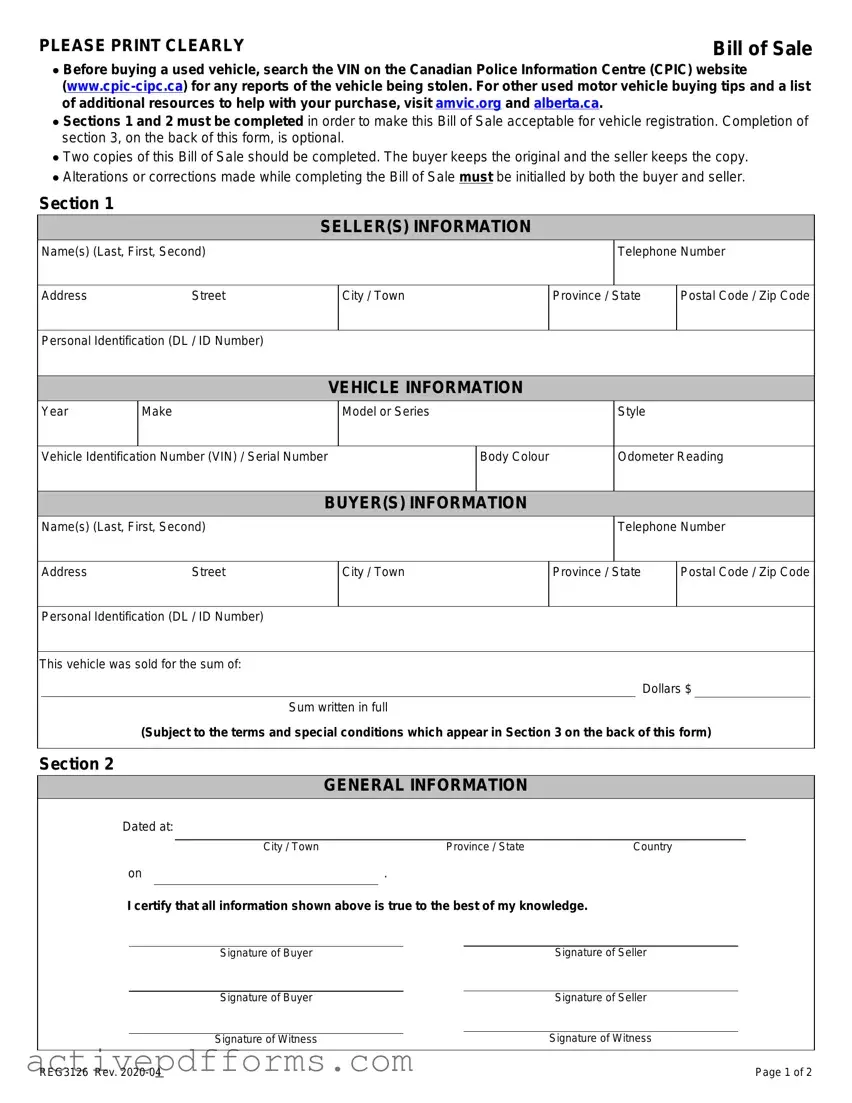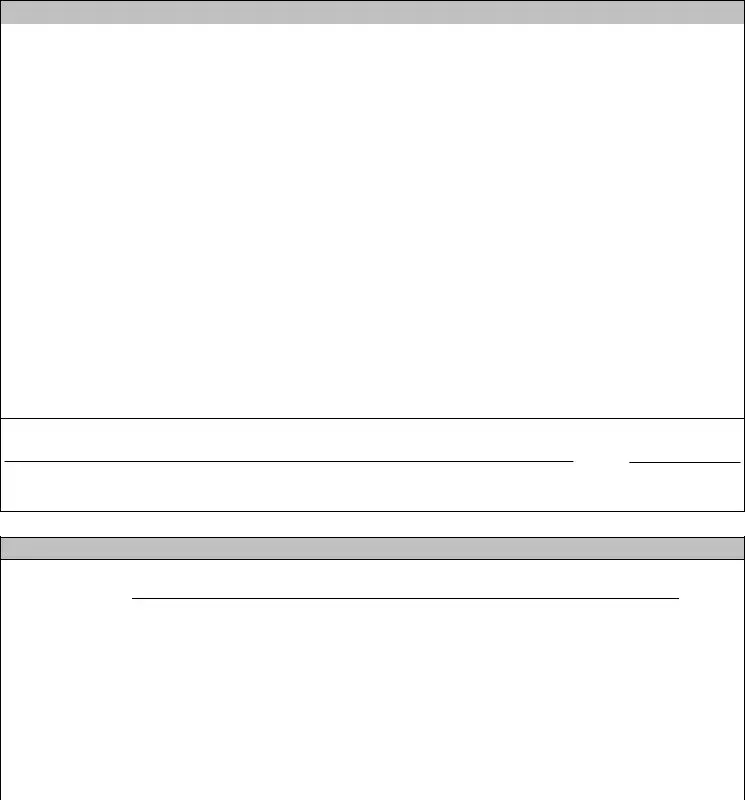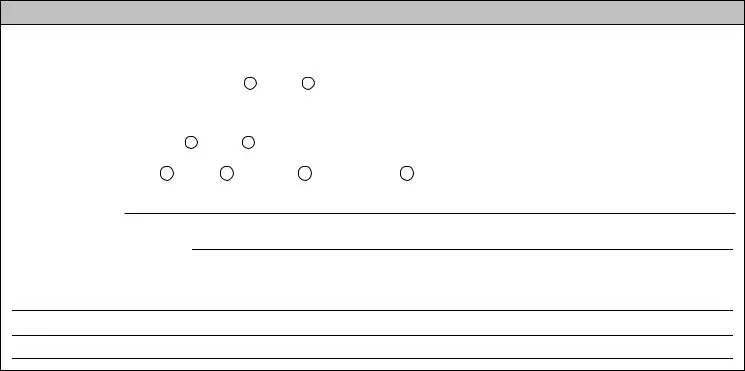Section 3
SPECIAL CONDITIONS OF SALE
1.The vehicle described on the front of this form is:
Check the appropriate box(es)
a) Free of all liens and encumbrances: |
0 Yes |
0 No |
If No, please give names of lien holders: |
|
|
|
|
|
|
|
b) Being paid for in full: |
0 Yes |
0 No |
|
|
|
|
Being paid by: |
0 Cash 0 Cheque |
0 Money Order 0 Other (please specify): |
|
2.Payment Terms:
3.Vehicle was last registered in:
4. Special conditions of sale (if any):
General Information:
• The Buyer should make sure that they visually inspect the vehicle identification number (VIN) for the vehicle identified in Section 1.
• The law in the Province of Alberta requires a vehicle to be insured prior to registration. Documentary proof of vehicle insurance is required. Legislation allows a person to whom a valid licence plate is issued to transfer the licence plate
to a newly purchased vehicle to be registered within 14 days of the date on their Bill of Sale.
The above does not apply to commercial vehicles used for the transportation of goods or passengers for compensation.
• A vehicle entering Alberta from another jurisdiction may require an out-of-province safety inspection. Information can be obtained from a registry agent. A listing of local registry agents can be found in the telephone directory under Licence and Registry Services; or visit alberta.ca for comprehensive registries and consumer information and services.
• In addition to the Bill of Sale, other identification is required to obtain Alberta registration. Where possible, obtain Section 2 of the previous Alberta vehicle registration certificate.
• The prospective purchaser can determine whether a vehicle is free of liens and encumbrances in Alberta by contacting a registry agent.
• In order to perform a search, a registry agent will require the VIN of the vehicle. A request for a search can be made in person or in writing. There is a fee for this service.
• Vehicle Information Reports are available from a registry agent. There is a fee for each service.
• The buyer must produce the original properly completed Bill of Sale, that includes the same information as shown on this standardized form, in order to register a vehicle in Alberta.
This form is provided as a courtesy by Service Alberta to ensure that sufficient information is contained within the Bill of Sale to permit registration of the described vehicle by the new owner.
No liability attaches to the Crown through the use of this document in respect of the sale of this vehicle. Any dispute arising from the sale becomes a civil matter among the parties named in this document.


